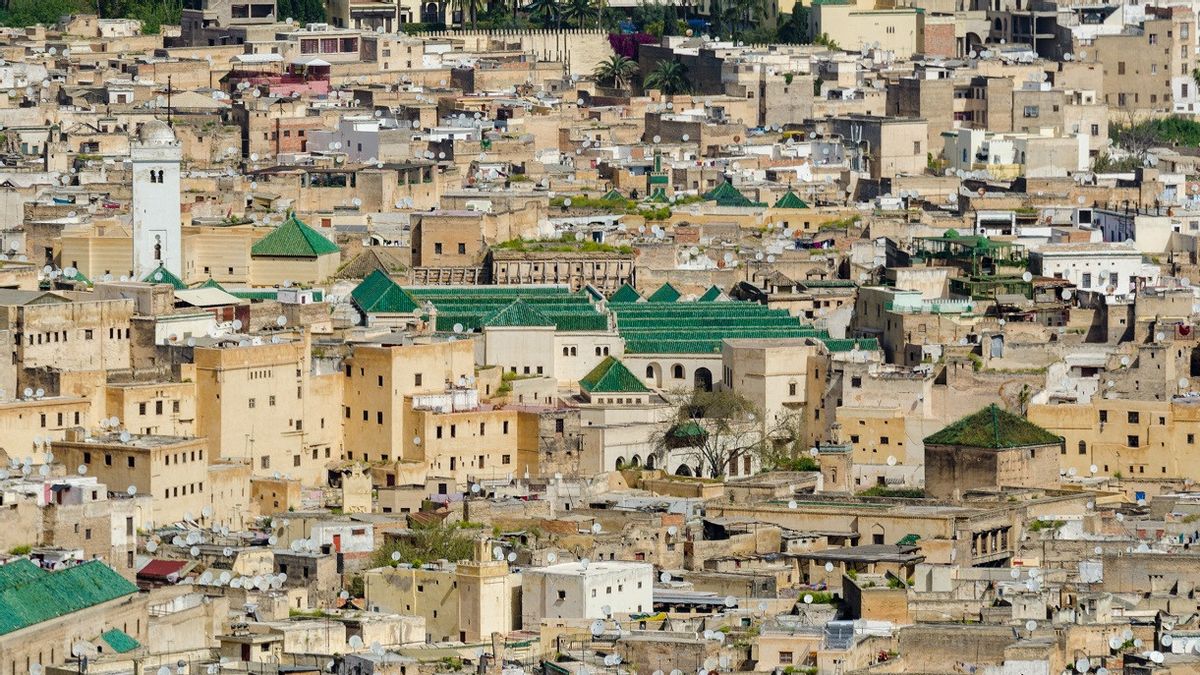JAKARTA - The thought of the oldest university in the world, which first comes to the mind of most people, maybe Al-Azhar University, Bologna University or Oxford University.
Not wrong. All three are included in the oldest university in the world, but in the second to fourth oldest order in the world, with Al-Azhar (975), Bologna University (1088) and Oxford University (1096).
According to UNESCO and Guinness World Record, Al-Qarawiyyin University (also written as Al-Karaouine) is "the oldest existing educational institution and continues to operate in the world."
Founded in 859 AD by Tunisian-born Fatima al-Fihri in Fez Morocco, this university is not only the oldest higher education institution on Earth but also the first to be founded by a woman, and a Muslim at the time.
Fatima used her inheritance from her merchant father's wealth to establish a university that started as an association school, known as madrasas, and the mosque that eventually developed into a higher education venue, reported by the Daily Sabah on December 1.
It also introduces a degree administration system according to different levels of study in different fields, such as religious studies, grammar and rhetoric.
Although the university first focused on religious teaching, its field of study was quickly expanded to include logic, medicine, mathematics, astronomy and others.
Thanks to the various topics and high quality of education it offers, scholars and students from all over the world Muslim visit and register at the institution. Its popularity has become so extraordinary, that universities introduce a strict selection system, which requires students to memorize the Koran and have good knowledge of Arabic and general sciences.
Sultan at that time supported universities with subsidies, gifts, and especially books and manuscripts. This led Al-Qarawiyyin University to have several libraries in the main building and its sides, accommodating countless influential works of its time.
Historical libraries are open to the public to this day and show the original al-Fihri diploma, which was tarnished on wooden boards at that time. The library currently hosts more than 4,000 valuable manuscripts in various fields, including historical copies of the Islamic holy book, the Al-Quran.
Some of these valuable texts include the work of the 14th century "Al-Muqaddimah" and the original copy "Al-'Ibar" by the famous Muslim historian Ibn Khaldun, the pioneer of sociology. Other pieces such as the famous Al-Muwatta' the earliest collection of hadith texts (the Prophet Muhammad's words) collected by Malik, are considered as one of the first law texts combining hadiths and fich, the jurisprudence of Islam.
As is common in modern universities, Al-Qarawiyyin held regular debates andulants, promoting the exchange of knowledge and the development of science.
The university itself was founded with the concept of higher education as we know it today. The idea of al-Fihri is to create a social space that allows intellectual exchange for progressive learning and teaching.
It is not wrong to say that Fatima's ideas and visions affect many universities across Europe. With her professional and institutional learning structure, which was previously invisible and never heard of, resonated across the European continent in the following centuries. European countries quickly saw the great potential behind this learning concept and immediately established their own institutions.
Throughout its history, this university has been a place for famous scholars to date, such as 12th-century cartographer Mohammed al-Idrisi, whose maps helped Europe explore during the Renaissance.
Despite the fact that the university is a gathering place for Islamic study students, it also attracts people from other religions. One of the Christian scholars who visited al-Qarawiyyin was Pope Sylvester II (946-1003), who is known to have a love for mathematics and astronomy.
Universitas, however, was only added to the Morocco university system in 1963. Contrary to common misunderstandings, both women and men could enter university. In 1965, the institution was officially named Al-Qarawiyyin University instead of being abbreviated as Al-Qarawiyyin.
To this day, the university maintains its traditional way of teaching students by sitting in a semi-circle, called halaqa, around the Sheikh or instructor.
The English, Chinese, Japanese, Arabic, and French versions are automatically generated by the AI. So there may still be inaccuracies in translating, please always see Indonesian as our main language. (system supported by DigitalSiber.id)













